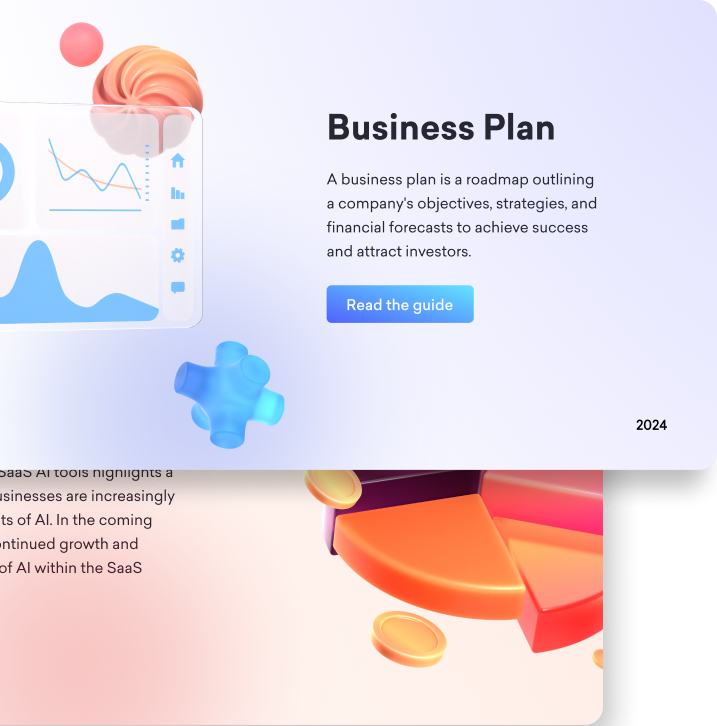
How to End a Presentation With Impact
A memorable presentation requires both a strong opening and a compelling close. It needs a memorable ending that reinforces your message and motivates action. Studies show people recall the first and last parts of an experience best, so crafting an effective conclusion is crucial. In this post, we’ll explore proven presentation closing tips, show you how to end a presentation with clarity and persuasion, and introduce call to action slides you can build in seconds with Decktopus.
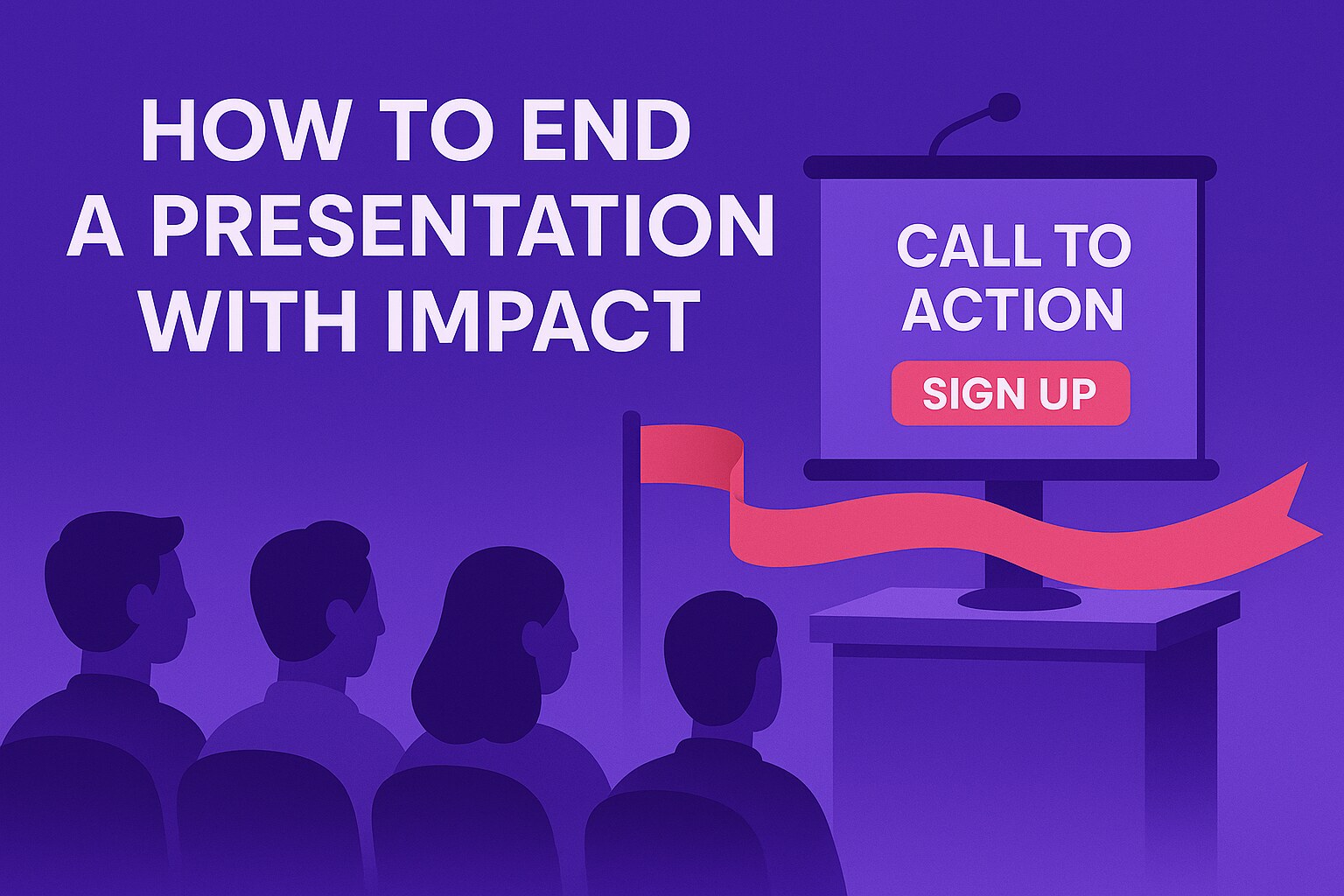
The Goals of a Strong Presentation Ending
A strategic conclusion achieves four essential objectives:
1. Reinforce Your Core Message
Remind your audience of the main point. This repetition cements the idea and ties everything together.
2. Inspire Action
Equip your listeners with a clear next step—whether it’s signing up, downloading a resource, or scheduling a demo.
3. Provide Closure
Signal that the story is complete. A deliberate ending prevents your talk from feeling abrupt or unfinished.
4. Enable Follow-Up
Offer ways to continue the conversation. Provide links, contacts, or QR codes so your audience can engage after the session.
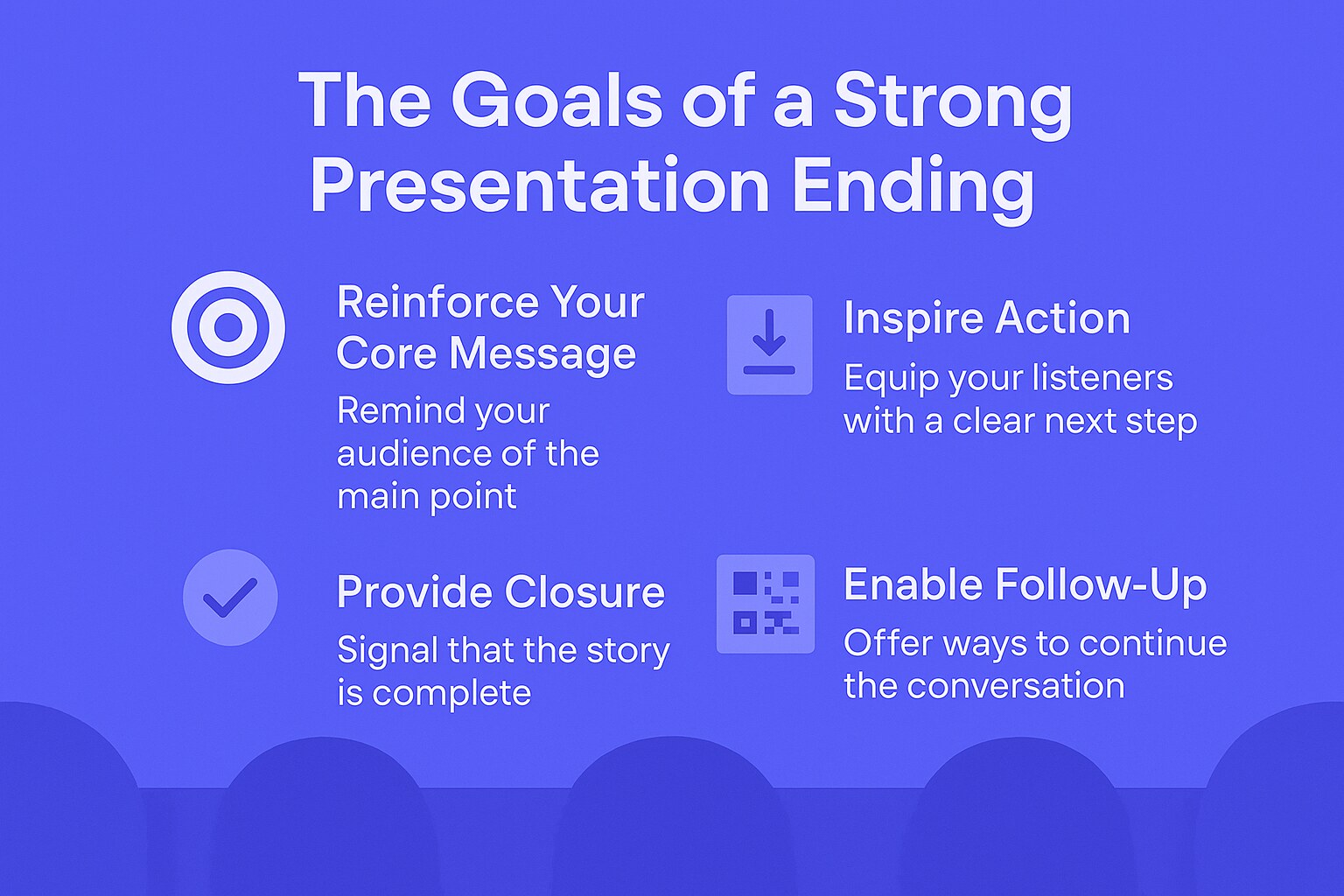
7 Powerful Ways to End Your Presentation
Below are seven proven techniques, each paired with a Decktopus slide template—to close with maximum impact.
1. Direct Call to Action (CTA)
- What it is: A clear instruction that tells your audience exactly what to do next (e.g., “Schedule your free trial today!”).
- Why it works: Specific CTAs reduce friction and guide attendees toward conversion.
- Implementation tips: Keep the action simple and time-bound: “Sign up by Friday to get 20% off.”
- Example: Picture a slide where a bold “Start Free Trial” button sits center-stage, accompanied by a QR code in the bottom-right—no extra clicks required.
- Visual Cue: (See screenshot below for reference.)
- Decktopus Slide: Use the CTA Slide to embed a button, clickable link, or QR code automatically.
2. Quote Reinforcement
- What it is: Close with the same or a related quote you opened with to create narrative symmetry.
- Why it works: Callbacks strengthen memory by framing your message in a familiar context.
- Implementation tips: Choose a concise, powerful quote. Display the speaker’s name and affiliation in smaller text beneath.
- Decktopus Slide: The Quote Wrap-Up Slide neatly formats quotes with stylish typography.
3. Next Steps Slide
- What it is: A slide that lists three concrete actions the audience can take immediately.
- Why it works: Breaking down actions into bite-sized steps lowers the barrier to follow-through.
- Implementation tips: Use numbered bullets and verbs (“Download”, “Connect”, “Share”).
- Decktopus Slide: The Checklist or Roadmap Slide offers customizable icons and progress indicators.
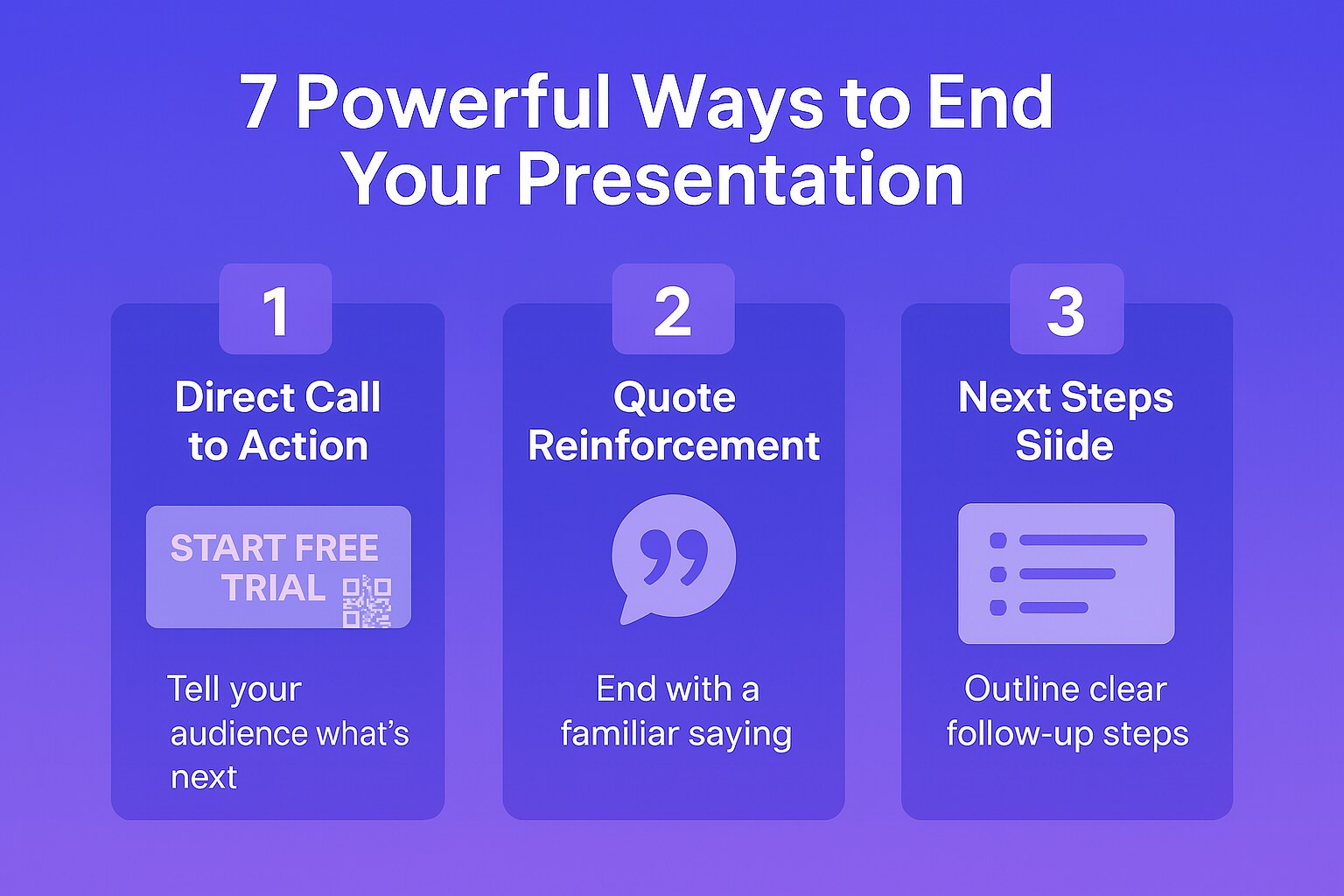
4. Summary Recap Slide
- What it is: A visually engaging bullet summary of your key points.
- Why it works: Recaps help information retention and give the brain a final review.
- Implementation tips: Limit bullets to 3–5 core takeaways. Pair each with a simple icon.
- Decktopus Slide: The Key Takeaways Slide uses consistent formatting to keep your recap clean and digestible.
5. Thank You + Contact
- What it is: A warm thank-you message paired with your contact details and social links.
- Why it works: Expressing gratitude fosters goodwill; contact info encourages follow-up questions.
- Implementation tips: Include email, LinkedIn, or Twitter handles. Add a small headshot for familiarity.
- Decktopus Slide: Try the Smart Contact Slide, which auto-formats links into clickable icons.
6. Final Question
- What it is: Pose a thought-provoking question that relates to your topic and prompts reflection.
- Why it works: Questions engage the audience mentally and leave them considering your message after the talk ends.
- Implementation tips: Use open-ended questions (“What could you achieve if…?”) to spark imagination.
- Decktopus Slide: Use an Interactive Exit Poll Slide to collect live responses and foster engagement.
7. Story Callback
- What it is: Revisit the anecdote or story you began with, bringing the narrative full circle.
- Why it works: Story arcs create emotional resonance and a satisfying sense of completion.
- Implementation tips: Show a split screen: left half the opening image, right half your final point.
- Decktopus Slide: The Story Wrap-Up Layout offers side-by-side imagery and text blocks for seamless narrative flow.
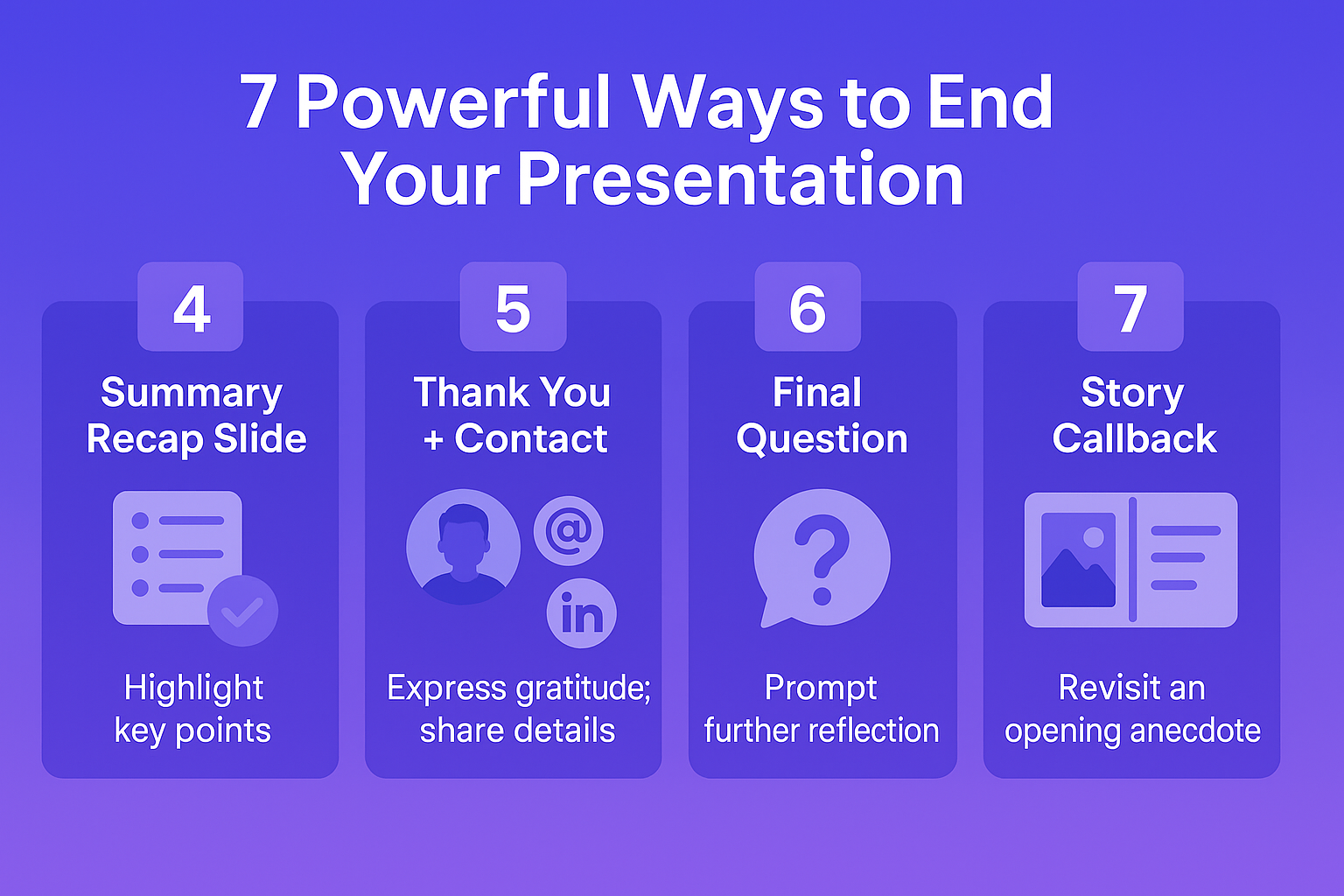
How Decktopus Makes Creating Call to Action Slides Effortless
Take the closing techniques above and supercharge them with Decktopus’s seamless slide-building tools, no design skills required.
Decktopus streamlines the process so you can focus on your message, not design:
- One-Click Elements: Instantly add buttons, links, and QR codes without manual formatting.
- Built-In Forms & Calendar: Embed lead-capture forms or scheduling links directly into your slide.
- CRM & Email Integrations: Connect to tools like Mailchimp or Salesforce to funnel responses automatically.
- Real-Time Analytics: Track click-through rates and QR scans to measure engagement immediately.
With these features, you’ll spend less time polishing slides and more time crafting a persuasive narrative.
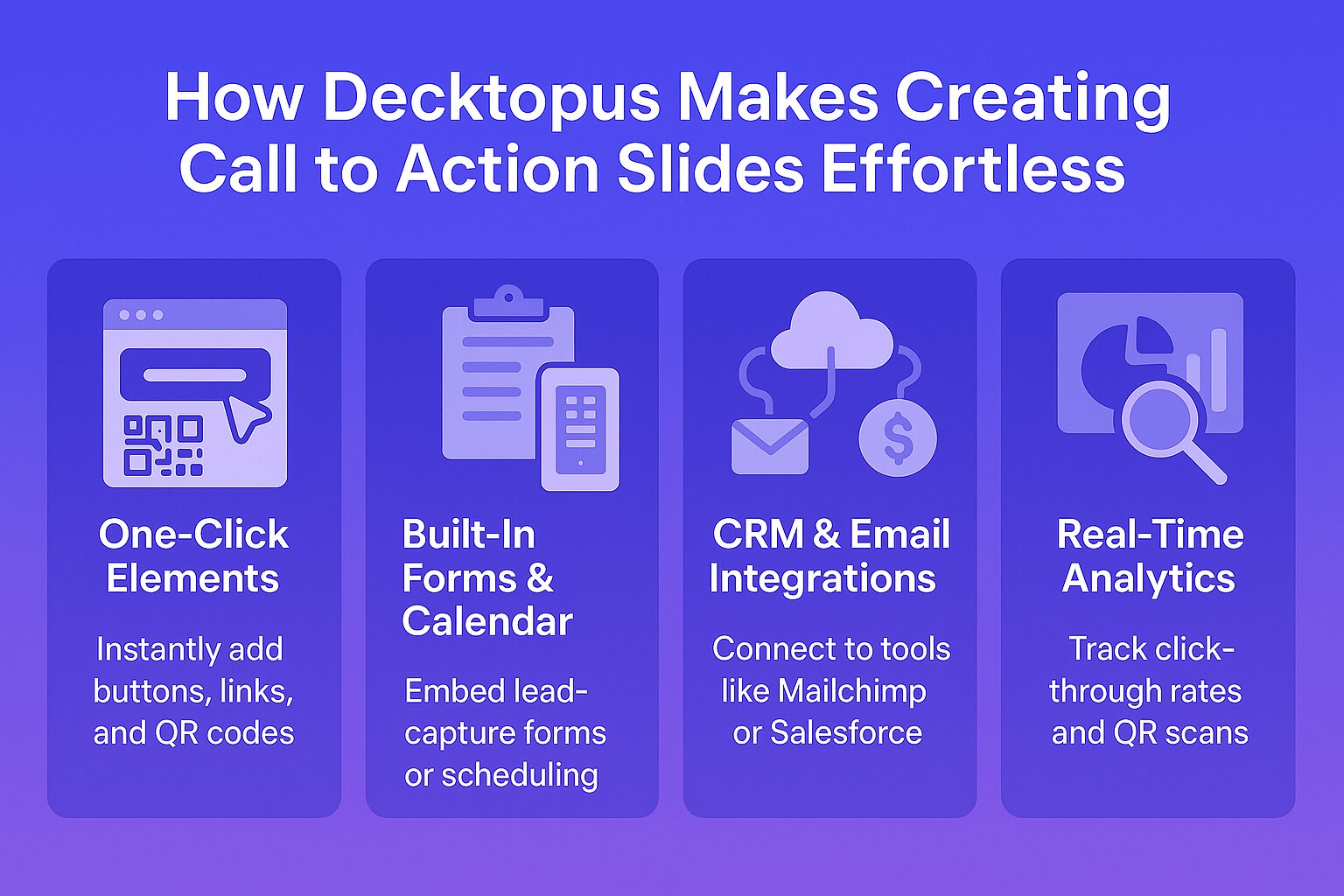
Ready to Close with Confidence?
Don’t leave your audience hanging—end your presentation with a clear, compelling call to action. Build your interactive CTA slide in seconds with Decktopus and ensure your message resonates long after the lights come up.

.svg)
.svg)
.svg)










.svg)



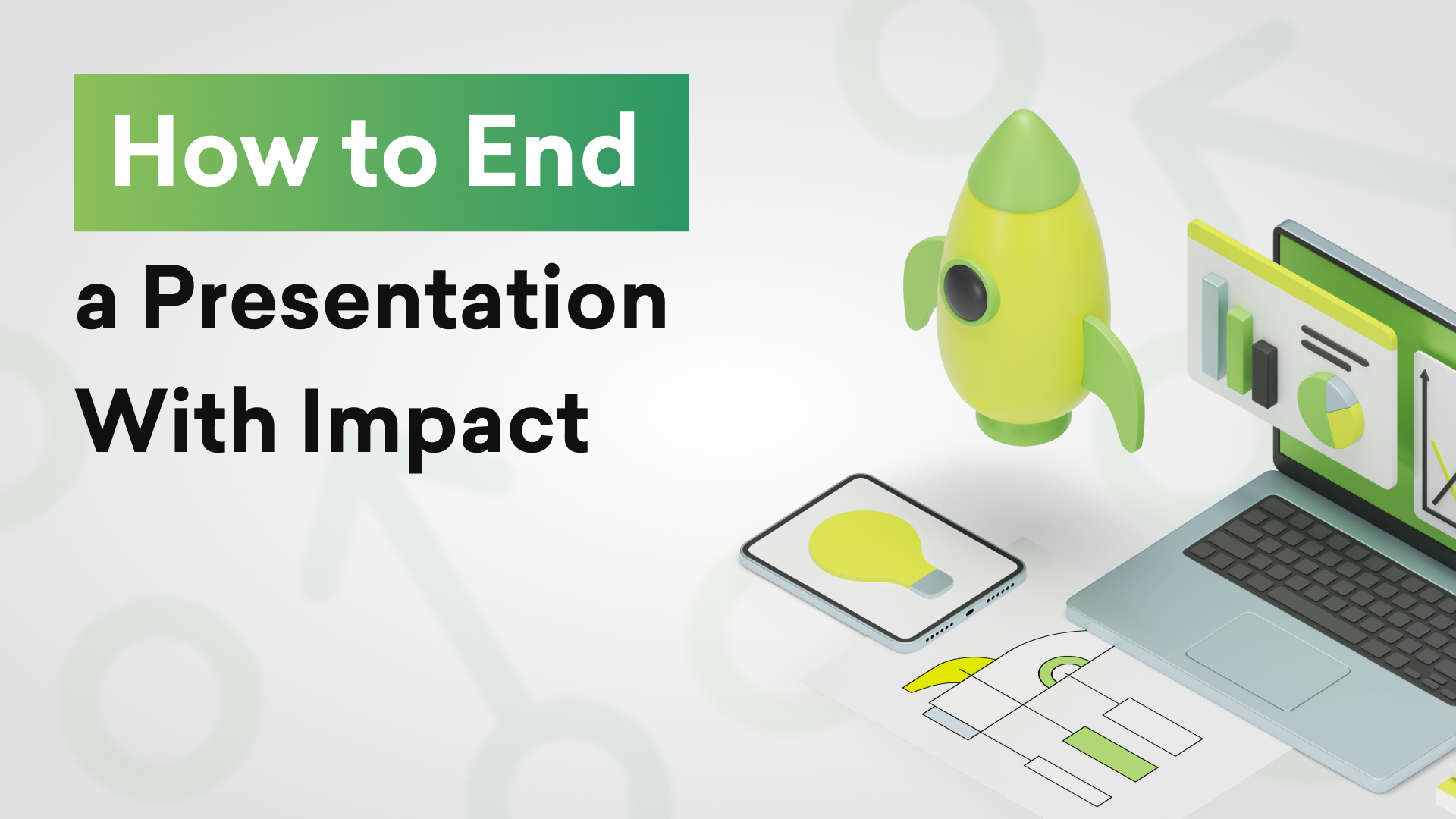
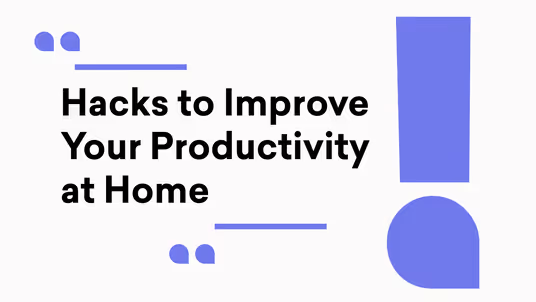
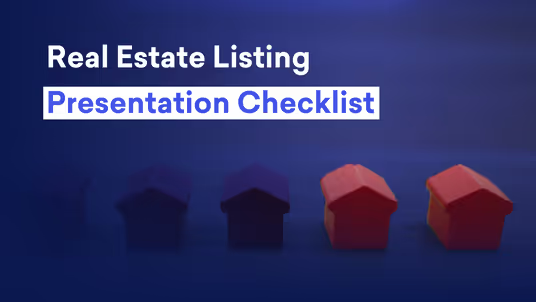






.svg)
.svg)
.svg)
.svg)
.svg)
.svg)
.svg)
